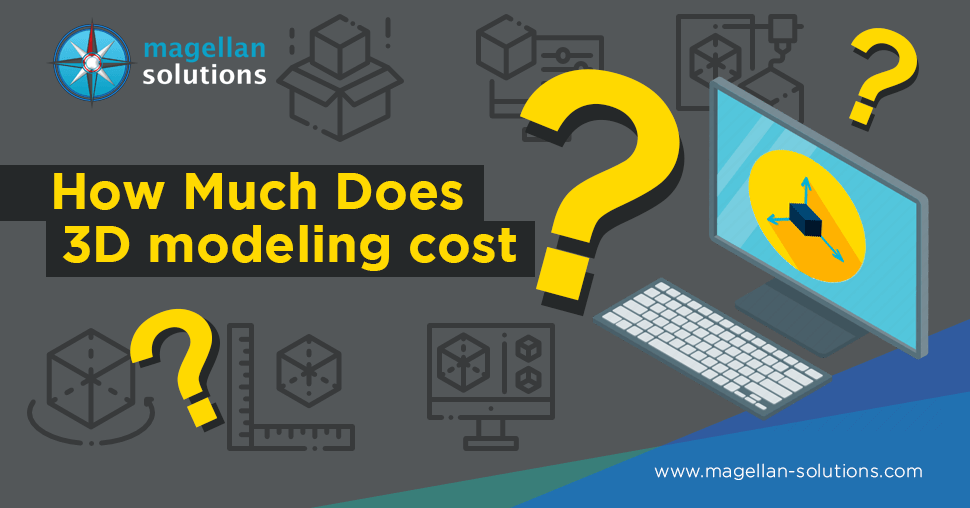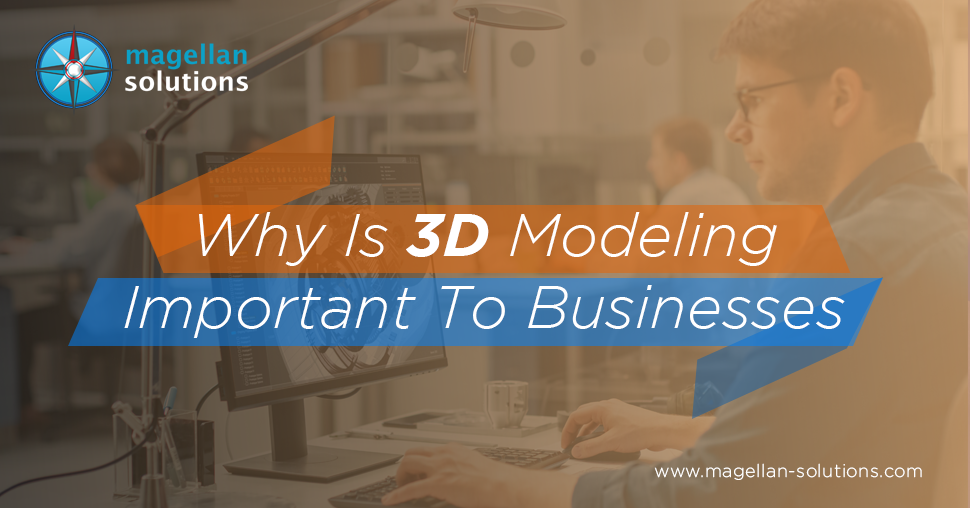Schedule a FREE call with our outsourcing expert now and get a precise quotation that meets your requirements. Don't wait - get started today!
3D modeling has revolutionized the way product design and development work. From simple two-dimensional illustrations, it turns concepts into close-to-reality digital models.
It also provides extensive information about the product, allowing designers to pinpoint inaccuracies and flaws before the actual production or construction stage.
Aside from these, there are many other reasons why 3D modeling is essential to businesses. Some of these are outlined below:
Why is 3D Modeling Important?
Accurate Depiction of the Product’s Physical Dimensions and Reactions
Advanced 3D modeling software offers profound features that enhance a product’s lighting, texturing, shadowing, and rendering.
At the same time, 3D modeling requires geometric measurements and material data. As a result, it depicts the physical dimensions of the product, along with its reactions to different physical stressors.
Unlike its basic version, advanced software has more features, a steeper learning curve, and a higher market price.
Facilitating Clear Communication and Coordination in Complex Projects
A pivotal advantage of 3D modeling is its ability to facilitate unparalleled communication and coordination among various stakeholders in projects sprawling industries such as architecture, engineering, and construction (AEC).
Using detailed visualizations, 3D modeling can reveal possible design clashes and discrepancies well before they become impactful or difficult to manage, thus greatly simplifying project development.
By taking the initiative with design and planning, 3D modeling allows all parties involved—architects, engineers, and clients alike—to completely align with a project vision, resulting in significantly more efficient workflows and well-coordinated efforts.
Better Visualization
Unlike its 2D counterpart, a 3D model lets you see the product from the inside out. It represents how it would look once 3D printed or manufactured as a physical product. This means you can examine even its tiniest details and entire appearance in a 360° view. With this feature, you can immediately see the adjustments needed to achieve your desired results.
Just imagine looking at a two-dimensional drawing with several measurements and formulas. Sure, the designer can understand what those numbers mean. But what about those with little background in 3D modeling, like some investors or consumers?
3D models are practical tools for capturing the audience’s imagination. They let them see what the object is about and how they could incorporate it into their daily lives.
Fast and Efficient Creation and Modification Process
With the right tools, skilled designers can build digital objects faster than producing manual drawings. Creating a single 3D model takes a few minutes to several hours, depending on its type and complexity.
One of the best things about a 3D model is you can easily edit it when needed. As long as you have the raw file (.stl, .blend, .3ds, .lxo, etc.), you can apply the changes you want whenever and wherever you are.
Moreover, if the situation calls for you to produce a physical prototype, having a 3D model will save you much time. You can simply 3D print it; after a few minutes or hours, the product is ready for inspection and evaluation.
Instead of getting anxious about an upcoming deadline, you can save your raw file and edit it according to your client’s preference.
Streamlining Project Documentation and Compliance
By the nature of their depth and detail, 3D models are a central component for satisfying project documentation, regulatory requirements, and industry standards. These detailed models provide a voluminous reference for the life of the project, from initial planning through final approvals.
This documentation is imperative to maintaining the integrity of the project and validating that all designs meet industry standards and regulations. Furthermore, the digitized 3D model brings ease to sharing and collaborating, enhancing project transparency and accountability even further.
Easier Documentation
Documenting the entire workflow is crucial to many industries. It provides a standard reference for planning and discussing project details, resulting in free-flowing communication among stakeholders and designers.
Picture this scenario: You’re using a 2D illustration in a meeting with a client without any engineering or architecture background. Describing the product’s appearance will undoubtedly take a lot of time. However, with a 3D model, you can show the 3D representation, and they can see what you’re trying to convey. This way, they can tell you what they want to see. As a result, proper documentation streamlines the decision-making process during the enhancement and maintenance phases.
3D modeling plays a crucial role in documenting a project. Though it only constitutes a small portion of the overall project documentation, conveying goals to everyone involved is still vital. As mentioned earlier, 3D models can show even the tiniest details, affecting the outcome.
Since 3D models are in digital formats, designers can easily save a copy of each version — from the initial to the final design — that can be used to check the development of a model. It can also be used as a reference when tracking down errors and inaccuracies.
Quicker to 3D Print
You cannot 3D print any object without a digital file. You can either scan an existing object or model the concept you have in mind. For industries involved in product manufacturing, architecture, engineering, and construction, 3D modeling is the only way to go. Once the digital 3D model is available, you can convert it into a printable file and print it into a prototype or final product.
Reduce Operational Costs
Using 3D models for 3D printing helps you save production costs. It accelerates the product development process and allows you to save both time and money. At the same time, it requires you to optimize your design based on the capacity of your 3D printer. Instead of using several materials for a single product, an efficient 3D design lets you use a single material.
Find out how much 3D modeling services cost here.
Good Marketing Tool
Marketers can use 3D models to produce interactive marketing collaterals for their target consumers.
Real estate agents, in particular, can use 3D models when selling properties. This will allow them to show their prospects of how the finished infrastructure would look like. They no longer struggle with providing lengthy descriptions when they can show them in the rendered image.
Product manufacturers also use 3D models when creating promotional materials. Even if they don’t have the product, they can start advertising it. It saves time, money, and energy since any delay in production costs money.
Moreover, using a 3D model with a 360° view of the product helps consumers fully understand the product. It allows them to compare the product to other brands. Aside from keeping customers engaged, it may also drive them to purchase.
Promotes Collaboration Among Team Members
Collaboration is essential in the design process. It leads to fast movements within the team and produces satisfactory results. Everyone can see working on 3D models with digital files promotes collaboration among stakeholders and designers. They can use it to brainstorm ideas, pinpoint the product’s strengths and weaknesses, and suggest improvements.
Right now, there are several collaboration tools available for 3D modelers. Some famous examples include Vectory, Thangs, SketchFab, Modelo, iMeshup, and even Dropbox and Google Drive.
Driving Innovation and Competitive Advantage
In today’s hyper-fast market, any business using 3D modeling greatly enhances its competitive edge. By adopting 3D modeling, companies can improve how they develop and design products as well as how they present and market products.
For example, using 3D modeling, real estate agents can offer virtual tours of properties, and manufacturers of products can create marketing materials far more immersive and engaging in which potential buyers can participate. This can have a mesmerizing effect on potential buyers by further immersing them in the property or product.
By further engaging the buyer, they also inform the buyer. A virtually ‘stimulated’ buyer may choose to make a purchase sooner, thereby extinguishing the sales cycle.
A Remarkable Tool Across All Industries
3D modeling has progressed because of its versatility and many other benefits. Everywhere you go, wherever you look, you’ll see something that underwent the 3D modeling process. It is present in almost all industries, which include, but are not limited to, the following:
- Architecture
- Engineering
- Construction
- Advertising and Marketing
- Gaming
- Geology and science
- Entertainment
- Publishing
- Healthcare
These industries, and several more, understand why 3D modeling is important and how it streamlines their processes in producing valuable products that cater to the needs and expectations of the market.
Most importantly, it allows businesses of all sizes to keep up with trends, meet customers’ expectations, and drive growth toward the organization.
Businesses that fail to adapt to the fast-changing demands of society fall behind. 3D modeling and other latest advancements are here to keep things moving.
The Home of Skilled 3D Modelers
The latest 3D modeling software is not enough to achieve the desired results. It would be best if you also had 3D modelers with artistic flair and a comprehensive understanding of the technical side of design.
Magellan Solutions, a Philippine-based BPO company, will help you find the right talents for your business. With over 18 years in the industry, we have successfully matched our clients with the best skills in our company. By determining your actual needs and requirements, we know we can also provide you with the best 3D modelers who understand your 3D modeling projects well. We offer competitively-priced packages to fit your budget.
Outsource to us now and expect quality output with fast turnaround times.
Contact us using the form below to get started.
















